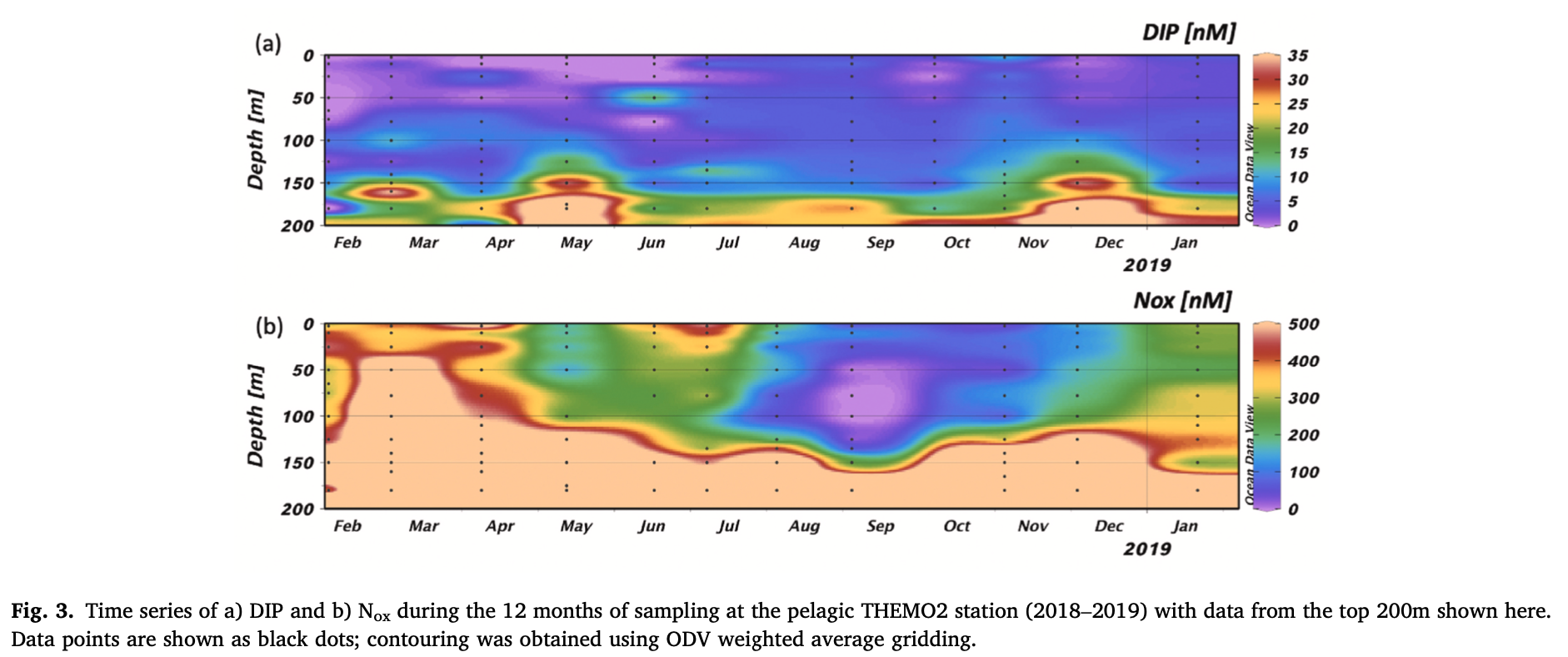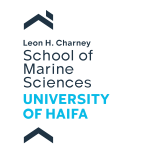Highlights
- First seasonal high sensitivity nutrients in the Pelagic Eastern Mediterranean.Excess Nitrate during winter mixing decreasing to Nutrient depleted in late stratified season.
- Phosphate depleted entire year with low DOP (40-30 nM) in photic zone.
- The measured N:P ratio depends on seasonality and not just location.
- Calculated Export Production and other biogeochemical properties confirm EMS behaves like a P depleted ocean gyre.
Abstract
The Eastern Mediterranean Sea (EMS), is ultra-oligotrophic with unusual anti-estuarine circulation. It is P depleted and the limited enrichment studies which have been carried out, suggest seasonal changes in nutrient limitation. In this study high sensitivity dissolved nutrients (and associated parameters) were determined monthly over an annual cycle at a pelagic location in the SE Levantine basin. Nitrate & Nitrite (Nox) concentrations were high (300–500 nM) during the winter mixing period and enabled a concurrent phytoplankton increase in which larger picoeukaryotes and eukaryotes were dominant. After the thermal stratification of the water column commenced, Nox decreased through early summer transition period to low values (generally 50 nM or less) in the late summer. DIP remained at low nM concentrations the entire year while DOP decreased from 40 nM in winter to 30 nM in summer.. Prochlorococcus, the smallest picocyanobacteria, that does not typically utilize nitrate, dominated during the summer when both Nox and DIP concentrations were lowest. Ammonium concentrations were low (10–100 nM) with no systematic changes with season or depth. As a result, the DIN:DIP ratios were high (20–825) in winter and low (2–66) in summer, showing that these ratios vary seasonally. The dynamics of nutrient availability combined with the temporal changes in total chlorophyll and the altered dominance of the predominant phytoplankton species (i.e. nitrate-metabolizing Synechococcus during winter versus the smaller Prochlorococcus abundant in summer), leads to our hypothesis that the seasonal change in DIN:DIP indicates a switch from P limitation in winter during the annual phytoplankton increase to N&P or even N limitation in summer. Export Production (172 mmol N m−2 y−1) determined from the calculated loss of Nox from the photic zone, was similar to previous estimates in the EMS. Our results in terms of seasonally changing nutrient dynamics and resulting productivity confirm that the EMS has many of the characteristics found in P starved ocean gyre systems.





